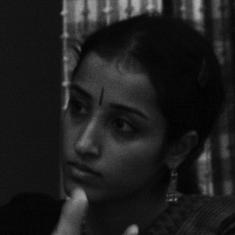Sunday, July 30, marks six years of eminent ethnomusicologist and scholar music Ashok Da Ranade’s death. His legacy, in the form of more than 20 books in English and Marathi, compositions for khayal, lavni, bhajan, and other forms, and his theatre and film work, bear witness to an exceptionally perceptive and creative mind. His writings encompassed a gamut of subjects, including putting together a taxonomy of music in India, writing the history of musical traditions, and perspectives on the aesthetics and philosophy of music.
Against any hierarchies between systems and forms of music, Dr Ranade or Ranade Sir, as he was known in the world of Indian music, was acutely aware of the multiplicity of categories, systems and genres of music in the country. He therefore stressed the need to examine non-elite musical categories and regional musicological literature along with Sanskrit treatises to gain a holistic picture of Indian music and musicology. His approach is reflected in his scholarly writings on folk, religious, tribal, popular, fusion and confluence musical styles.
Musical links
Ranade’s ability to make connections between seemingly unrelated historical events and musical occurrences stemmed from his conviction that the evolution of musical ideas was influenced by a variety of circumstances such as geographical contiguity, religious connections, political subservience, migration, trade, and increasing interest in other performing cultures. He also explored cultural zones that formed contiguous areas of musical practices and intercultural exchanges and were not stifled by political boundaries. In a globalised world that seeks to stamp out differences between cultures and celebrate a homogenised consumerist worldview, Ranade’s formulation of the concept of cultural zones is of indescribable value.
Ranade’s proclivity for codification, categorisation and definition has given us a vocabulary that has become integral to the discourse on Indian music. His Music-contexts: A Concise Dictionary of Hindustani Music is emblematic of his rigorous pursuit of the nuances of the performing and scholastic traditions. Among other things, it demystifies North Indian music, steering clear of the conventional adjectival approach that most other endeavours adopt.
As a teacher, he ensured that his knowledge was freely available to students. As the first Director of the University Music Centre at the University of Bombay (now University of Mumbai), he brought together elements of the guru-shishya tradition and modern institutionalised education.
Here is a link that provides a window into his views on dhrupad as a response to a questionnaire presented by scholar-musician Deepak Raja.
The next track is a Sanskrit Ashtapadi penned by the medieval poet Jaydeva and composed by Ranade. The tightly structured composition is presented by Ranade’s disciples.
Ranade conducted incisive interviews with several prominent Hindustani musicians for telecast on Doordarshan. Although these interviews were in Marathi, here is an interview with the Kirana gharana exponent and charismatic vocalist Bhimsen Joshi conducted in Hindi.
Ranade’s vocal compositions included his pseudonym Rasik Rang. We end with a short vocal recital by Ashok Ranade. He presents his composition in the raag Gavati. The composition is set to Teentaal, a cycle of 16 matras or time-units.










